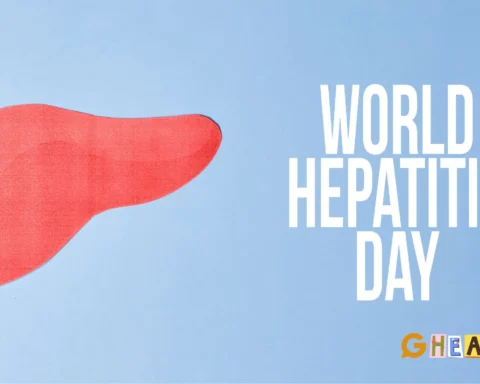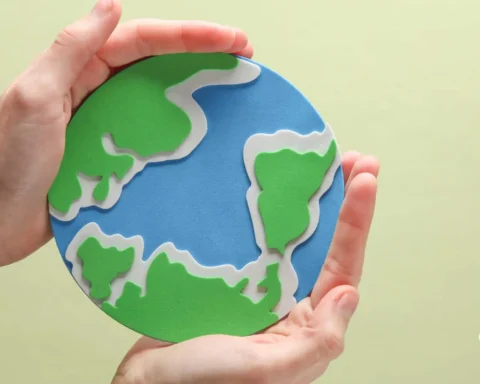In a globalised world, nations have learned to cooperate at various levels. A good example is the relationship between India and Slovenia since 1993. India and Slovenia have been fostering significant cooperation in their bilateral trade relations, with India's exports to Slovenia increasing from USD 314.05 million to USD 610.87 million between 2018-19 and 2022-23 and imports from Slovenia also growing. By April 2023-24, the trade volume reached USD 79.40 million, with India maintaining a trade balance of USD 18.28 million. This export trade with European nations, focusing on Slovenia and India, will help you find the niche you want to invest in.
In this article, we look at the exports from India and Slovenia to 5 countries - Germany, Italy, Switzerland, Croatia, and Austria. This study compares the export trade volumes of India and Slovenia. The aim is to inform the new entrepreneurs on the viability of potential business ventures.
Table of Contents
Economic Complexity Index (ECI)
A nation's economic complexity and knowledge embedded in its economy are revealed by the Economic Complexity Index (ECI), which evaluates its unique product manufacturing, export volume, and productive output. A wide range of products, including low-complexity, intermediate, and highly specialised goods that all call for advanced knowledge and abilities, are included in the ECI. Hierarchical classification systems help to sort products; the most common system is the updated Harmonized System (HS). This globally standardised system gives Every traded product a unique code, which makes customs processes, trade paperwork, and the calculation of duties and taxes more consistent.
Economic Competitiveness (ECI) is a powerful tool for understanding and predicting macroeconomic outcomes, such as GDP growth and per capita income. It outperforms conventional measures like human capital, competitiveness, and governance. There is a negative correlation between income inequality and ECI, with knowledge-intensive productive structures providing a more compelling explanation for cross-national income inequality differences.
Creating helpful knowledge and its application in complex industries is crucial for economic development, and increasing the quantity and complexity of exportable goods can help countries improve their ECI. The Economic Corridor Index (ECI) is a predictive tool for economic growth and income inequality, indicating a nation's ability to manufacture and export complex goods, leading to economic expansion, higher income levels, and more equitable income distribution.

This image displays the non-ubiquity of national exports.
Based on export data, the ECI evaluates a nation's productive knowledge and capabilities.
- It takes into account the complexity and diversity of a nation's export portfolio.
- A nation with a higher ECI exports a greater variety of sophisticated goods, indicating a more developed and varied economy.
- ECI aids in determining a nation's comparative advantage in particular sectors of the economy.

Country Complexity Ranking - Slovenia

Country Complexity Ranking - India
Gross Domestic Product (GDP)
GDP stands for gross domestic product, which is the total monetary value of all goods and services produced inside a nation's borders over a given period, usually a year.
- It represents the size and total economic output of an economy.
- Consumption, investment, government spending, and net exports (exports less imports) are all included in GDP.
- It offers a glance at growth and economic activity.

Largest economies in the world by GDP (nominal) in 2023, according to the International Monetary Fund estimate
Relation Between ECI and GDP
While ECI and GDP are related, they serve different purposes:
- ECI focuses on the complexity and diversity of exports, emphasising a country’s ability to produce and export sophisticated products.
- GDP provides a broader view of economic performance, including both domestic and international economic activities.
A positive correlation between ECI and GDP suggests that countries with more complex economies tend to have higher GDPs. However, other factors (such as population size, natural resources, and economic policies) also influence GDP.
Countries with the highest ECI 2023
In 2023, the top 5 countries based on their Economic Complexity Index (ECI) are as follows:
- Japan: Ranked first with an ECI of 2.43.
- Switzerland: Second with an ECI of 2.17.
- Republic of Korea (South Korea): Third with an ECI of 2.11.
- Germany: Fourth with an ECI of 2.09.
- India: Fifth with an ECI of 1.85.
The relative complexity and level of knowledge in each nation's economy are reflected in these rankings. A more complex and diversified economic system is indicated by higher ECI values.
ECI of Slovenia (2023)
Slovenia's economy ranked 12th in complexity in 2021, based on the Economic Complexity Index (ECI). Based on export data, this index evaluates a nation's productive knowledge and capabilities. A higher ECI indicates an economy that is more developed and diverse. Slovenia's position illustrates its capacity to export various sophisticated goods, which supports its robust economy.

Economic Indicators of Slovenia (2021)
ECI of India (2023)
As per the most recent reports, India's total exports increased by 2.0% YoY in December 2023.
In December 2023, total imports were at 58.3 USD billion, a decrease of 3.9% from the previous year. India's trade balance in December 2023 showed a 19.8 USD billion deficit.
India's trade balance in October 2023 was $29.9 billion negative due to $33.5 billion in exports and $63.5 billion in imports. Interestingly, compared to the prior year, exports climbed by $1.95 billion (6.17%), while imports increased by $4.44 billion (7.52%).
Economic Indicators of India (2021)
Top 5 Trade Partners of Slovenia
The top 5 trade partners of Slovenia in terms of exports are Germany, Italy, Switzerland, Croatia, and Austria. The details are shown below.
Germany: Slovenia's main trading partner is Germany. Germany is a major destination for Slovenian exports, which include packaged medications, automobiles, and refined petroleum. The two nations trade goods and services.
Italy: Slovenia exports to Italy, and the two nations work together in many areas, strengthening their economic relations.
Switzerland: Slovenia and Switzerland have close economic ties. Bilateral trade between the two countries is supported by the exchange of goods and services.
Croatia: Slovenia has economic relations with Croatia, a neighbouring nation. The two nations trade, taking advantage of their proximity.
Austria: Austria is a key partner for Slovenia. The exchange of goods and services contributes to their economic cooperation.
Slovenia Exports
Exports in Slovenia decreased to 3905.25 million EUR in December from 5114.35 million EUR in November of 2023. Exports in Slovenia averaged 1618.00 EUR Million from 1992 until 2023, reaching an all-time high of 5285.52 EUR Million in September of 2022 and a record low of 346.40 EUR Million in August of 1993. (Source: Statistical Office of the Republic of Slovenia)
Trade with European Nations
Trade with Germany: ECI of Germany (2023)
Germany ranked fifth in the Economic Complexity Index (ECI) in 2023. The ECI is a gauge of a nation's productive knowledge and capacity for the profitable export of sophisticated goods. A higher ECI indicates a more refined and diverse economy. With an ECI of 1.96, Germany's highly complex economy has a solid knowledge base and a wide range of export capabilities.
Economic Indicators of Germany (2021)
Slovenia's main trading partner is Germany. It is a major destination for Slovenian exports, which include packaged medications, automobiles, and refined petroleum. The two nations trade goods and services.
Slovenia exports to Germany (2021)

India exports to Germany (2021)
Trade with Italy: ECI of Italy (2023)
Italy's Economic Complexity Index (ECI) was 1.341 in 2023. This score shows that Italy can produce and export sophisticated goods that call for a high degree of expertise.
Italy was ranked as the 19th most complex economy in the world in 2023, indicating a diverse and sophisticated export structure driven by a strong manufacturing sector.

Economic Indicators of Italy (2021)
Country Complexity Ranking - Italy

Slovenia exports to Italy (2021)
Trade with Switzerland: ECI of Switzerland (2023)
Switzerland's Economic Complexity Index (ECI) was 2.141 in 2023. With a high ECI score, Switzerland is well-suited to produce and export sophisticated goods that call for a high degree of expertise. After Japan, it had the second-most complex economy in the world. In 2023, Switzerland exported $17.45 billion worth of goods to Slovenia, making it one of Slovenia's major trading partners, followed by China and India, according to the United Nations COMTRADE database on international trade and the Swiss Trade Monitor.

Economic Indicators of Switzerland (2021)

Country Complexity Ranking - Switzerland
Slovenia exports to Switzerland (2021)
India exports to Switzerland (2021)
Trade with Croatia: ECI of Croatia (2023)
Croatia's Economic Complexity Index (ECI) was 0.811 in 2023. This score indicates Croatia's ability to produce and export a wide range of goods, though it is more complex than nations with higher ECI scores. Croatia's economy has grown more complicated over the past 20 years, rising from the 36th to the 34th in the ECI ranking.

Economic Indicators of Croatia (2021)
Country Complexity Ranking - Croatia

Slovenia exports to Croatia (2021)
India exports to Croatia (2021)
Trade with Austria: ECI of Austria (2023)
Austria ranked number nine on the Economic Complexity Index (ECI) 2023 out of 131 countries. The ECI score was 1.502. This ranking highlights the high knowledge intensity of Austria's economy. The ECI gauges a nation's capacity to manufacture and export sophisticated goods that demand expertise and understanding. It is a measure of the sophistication of a nation's exports.

Economic Indicators of Austria (2021)

Country Complexity Ranking - Austria
Slovenia’s exports to Austria were US$3.66 Billion in 2022, according to the United Nations COMTRADE database on international trade. Slovenia Exports to Austria - data, historical chart, and statistics - was last updated in February of 2024.
Slovenia exports to Austria (2021)
India exports to Austria (2021)
Conclusion
India, a significant economy with rapid global growth, is a crucial global economic governance partner. As the EU's third-largest trading partner, it has seen a 30% increase in goods trade between the two countries over the past decade.
Slovenia and India have a strong history of cordial relations, strengthened by Slovenia's independence thirty years ago. Establishing embassies has increased their significance, and India is Slovenia's second-most significant trading partner in Asia. Slovenia and India's trade relations with the EU have grown significantly, strengthening their ties and contributing to the global economy. Untapped potentials in two-way trade and investment must be explored to develop economic relations.
This ‘trade with European nations’ insight highlights Slovenia and India and has opened up the dialogue for new entrepreneurs to seek the field and sector they want to invest in. Tie-ups in new fields of mutual interest will help fill any existing gaps and create wealth and resilience for both nations to meet future challenges.











[…] transportation connector between the Adriatic Sea and the Balkans. The Port of Koper facilitates trade and transportation. Ljubljana's Jože Pučnik Airport hosts various cargo logistics companies and […]
[…] India and Slovenia are experiencing steady growth in bilateral trade, with India primarily exporting pharmaceuticals, textiles, and machinery and Slovenia exporting machinery, electrical equipment, and chemicals. Investment flows have also increased, with Indian companies investing in Slovenia's automotive, IT, and pharmaceutical sectors. […]
[…] is a belief system that emphasises the importance of our membership in a nation, valuing its origins, nature, and value. It views us as social animals, sharing languages, […]
[…] businesses are valued partners for enterprises seeking to effectively and successfully enter European markets because of their reputation for producing high-quality goods and services and their […]
[…] and Slovenia have a strong trade relationship, with India being a significant Asia foreign trade partner. Bilateral trade has […]